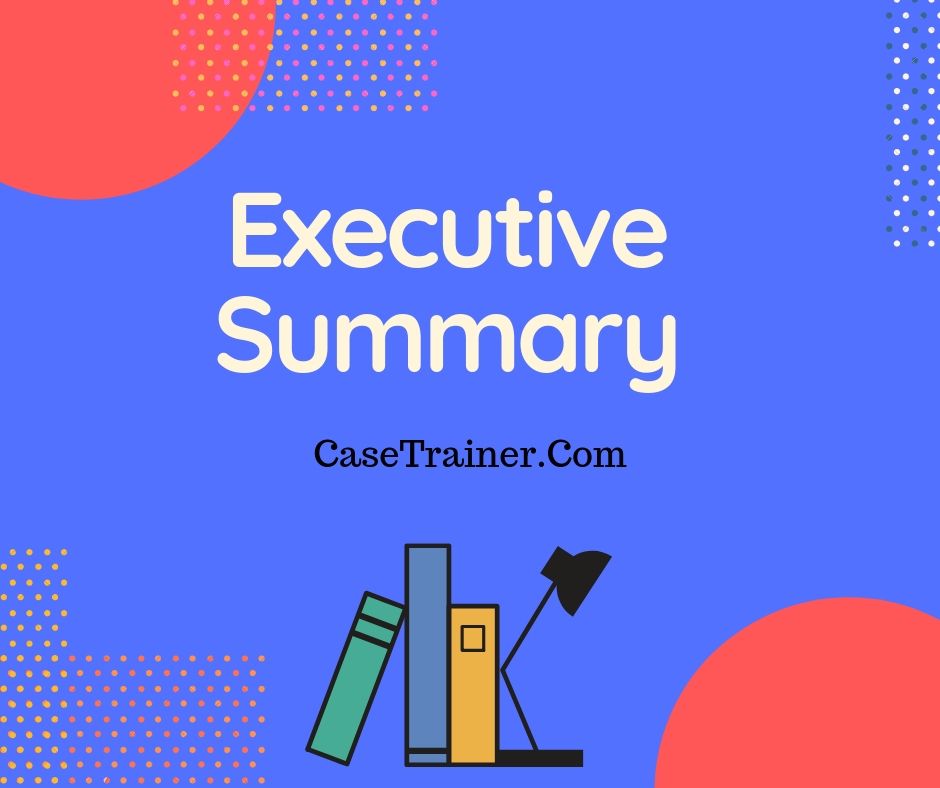Global Health Partner Obesity Care Case Study Solution & Analysis
Introduction
Global Health Partner Obesity Care is currently one of the greatest food chains worldwide. It was founded by Henri Global Health Partner Obesity Care in 1866, a German Pharmacist who initially released "Farine Lactee"; a combination of flour and milk to feed babies and decrease death rate.
Global Health Partner Obesity Care is now a transnational business. Unlike other multinational business, it has senior executives from various nations and tries to make decisions thinking about the whole world. Global Health Partner Obesity Care Case Study Solution currently has more than 500 factories around the world and a network spread throughout 86 countries.
Function
The function of Global Health Partner Obesity Care Corporation is to boost the quality of life of people by playing its part and providing healthy food. While making sure that the business is prospering in the long run, that's how it plays its part for a much better and healthy future
Vision
Nestlé's vision is to supply its customers with food that is healthy, high in quality and safe to eat. It wishes to be ingenious and concurrently understand the requirements and requirements of its clients. Its vision is to grow quickly and offer products that would satisfy the needs of each age group. Global Health Partner Obesity Care envisions to develop a trained labor force which would assist the company to grow.
Objective.
Nestlé's mission is that as currently, it is the leading business in the food industry, it thinks in 'Good Food, Great Life". Its objective is to offer its consumers with a variety of choices that are healthy and best in taste also. It is focused on offering the best food to its consumers throughout the day and night.
Products.

Global Health Partner Obesity Care has a large range of products that it provides to its customers. In 2011, Global Health Partner Obesity Care was noted as the most rewarding company.
Goals and goals.
• Bearing in mind the vision and mission of the corporation, the company has actually set its objectives and goals. These goals and goals are noted below.
• One objective of the business is to reach no land fill status.
• Another goal of Global Health Partner Obesity Care is to waste minimum food throughout production. Usually, the food produced is squandered even before it reaches the consumers.
• Another thing that Global Health Partner Obesity Care is working on is to improve its packaging in such a method that it would help it to lower those issues and would likewise ensure the shipment of high quality of its items to its clients.
• Meet worldwide requirements of the environment.
• Build a relationship based on trust with its consumers, business partners, employees, and federal government.
Vital Issues.
Just Recently, Global Health Partner Obesity Care Case Study Analysis Business is focusing more towards the technique of NHW and investing more of its earnings on the R&D innovation. The country is investing more on mergers and acquisitions to support its NHW method. The target of the company is not achieved as the sales were anticipated to grow higher at the rate of 10% per year and the operating margins to increase by 20%, given in Display H.
Situational Analysis.

Analysis of Existing Technique, Vision and Goals.
The present Global Health Partner Obesity Care method is based on the idea of Nutritious, Health and Wellness (NHW). This method deals with the idea to bringing modification in the consumer choices about food and making the food things much healthier concerning about the health issues.
The vision of this technique is based upon the key method i.e. 60/40+ which just means that the products will have a rating of 60% on the basis of taste and 40% is based on its nutritional value. The products will be made with additional nutritional value in contrast to all other products in market getting it a plus on its nutritional content.
This strategy was embraced to bring more tasty plus healthy foods and drinks in market than ever. In competitors with other business, with an intent of maintaining its trust over customers as Global Health Partner Obesity Care Company has gotten more relied on by clients.
Microenvironment Analysis (PESTEL Analysis).
The analysis used to determine the position of business in the market is done by utilizing PESTLE analysis, given in Exhibit A. Global Health Partner Obesity Care works under the regulations and rules directed by federal government and food authority. The business is more focused on its services and products to ensure about the item quality and security. This analysis will help in understanding environment of external market in the global food and beverage industries. (Parera, 2017).
Political.

The political impact on the company is greatly influenced by the government laws and regulations. The business has to fulfill its requirements supplied by government otherwise it needs to pay fine. Global Health Partner Obesity Care is considerably supported by Federal government to fulfill all the requirements of requirements like acts of health and safety. In efforts to manufacture good food, Global Health Partner Obesity Care is changing the standards of food and drink production. This might cause the violation of governmental guidelines and guidelines.
Economic.
Initiation of business where the capital earnings of each individual matters for the increased net sale as this differs country-to-country. The economy of the Global Health Partner Obesity Care Company in U.S. is growing year by year with variable products launch especially focusing on the nutritional food for infants.
Social.
The social environment keeps altering with respect to time like the attitude of the customer as well as their lifestyles. Any product or service of any company can not succeed until the business is not concerned about the living system of the customer. Global Health Partner Obesity Care is taking steps to satisfy its objectives as the world remains in search of healthy and delicious food.
Technological.
In the development of business, tactical steps are rather necessary. Global Health Partner Obesity Care is among the leading well-known multinational firm and by time it buys different departments to take its products to brand-new level. Global Health Partner Obesity Care is spending more on its R&D to make its items much healthier and nutritious offering consumers with health benefits.
Legal.
There is no such impact of legal factors of Global Health Partner Obesity Care as it is more concerned over its regulations and laws.
Environmental
Global Health Partner Obesity Care, in terms of ecological effect is committed to work in eco-friendly environment with preservation of the natural resources and energy. If the resources utilized are recyclable or not, as due to the manufacturing of larger number of items there might be a danger.
Competitive Forces Analysis (Porter's Five Forces Model).
Global Health Partner Obesity Care Case Study Solution has obtained a variety of business that assisted it in diversification and growth of its product's profile. This is the thorough description of the Porter's design of 5 forces of Global Health Partner Obesity Care Company, given up Display B.
Competitiveness.
There is severe competitors in the market of food and drinks. Global Health Partner Obesity Care is among the top company in this competitive industry with a number of strong competitors like Unilever, Kraft foods and Group DANONE. Global Health Partner Obesity Care is running well in this race for last 150 years. Each company has a definite share of market. This competition is not simply limited to the cost of the item but also for quality, variation and innovation. Every market is making every effort hard for the maintenance of their market share. Nevertheless, the competitors of other companies with Global Health Partner Obesity Care Case Study Analysis is rather high.

Risk of New Entrants.
A number of barriers are there for the brand-new entrants to occur in the customer food industry. Just a few entrants prosper in this industry as there is a need to understand the consumer requirement which needs time while recent competitors are well aware and has advanced with the customer commitment over their items with time. There is low threat of new entrants to Global Health Partner Obesity Care as it has rather large network of distribution internationally dominating with well-reputed image.
Bargaining Power of Suppliers.
In the food and drink industry, Global Health Partner Obesity Care Case Study Solution owes the largest share of market requiring higher number of supply chains. In response, Global Health Partner Obesity Care has also been worried for its suppliers as it believes in long-lasting relations.
Bargaining Power of Purchasers.
There is high bargaining power of the purchasers due to fantastic competitors. Changing cost is quite low for the customers as many business sale a number of comparable products. This appears to be a terrific risk for any business. Hence, Global Health Partner Obesity Care Case Study Help makes certain to keep its consumers satisfied. This has actually led Global Health Partner Obesity Care to be one of the devoted company in eyes of its purchasers.
Risk of Replacements.
There has been a fantastic hazard of substitutes as there are replacements of some of the Nestlé's products such as boiled water and pasteurized milk. There has actually likewise been a claim that some of its items are not safe to use resulting in the reduced sale. Thus, Global Health Partner Obesity Care started highlighting the health benefits of its items to cope up with the replacements.
Rival Analysis.
Global Health Partner Obesity Care Case Study Help covers a number of the popular consumer brands like Set Kat and Nescafe and so on. About 29 brands among all of its brands, each brand name made an income of about $1billion in 2010. Its major part of sale is in North America making up about 42% of its all sales. In Europe and U.S. the top significant brand names sold by Global Health Partner Obesity Care in these states have a great reputable share of market. Similarly Global Health Partner Obesity Care, Unilever and DANONE are 2 large industries of food and beverages in addition to its main competitors. In the year 2010, Global Health Partner Obesity Care had made its annual revenue by 26% increase because of its increased food and beverages sale specifically in cooking things, ice-cream, beverages based upon tea, and frozen food. On the other hand, DANONE, due to the increasing costs of shares resulting an increase of 38% in its earnings. Global Health Partner Obesity Care Case Study Solution decreased its sales expense by the adaptation of a new accounting procedure. Unilever has number of workers about 230,000 and functions in more than 160 countries and its London headquarter as well. It has actually become the second biggest food and beverage market in the West Europe with a market share of about 8.6% with only a difference of 0.3 points with Global Health Partner Obesity Care. Unilever shares a market share of about 7.7 with Global Health Partner Obesity Care ending up being ranking and very first DANONE as third. Global Health Partner Obesity Care brings in regional customers by its low expense of the product with the local taste of the items maintaining its top place in the worldwide market. Global Health Partner Obesity Care business has about 280,000 staff members and functions in more than 197 countries edging its competitors in lots of regions. Global Health Partner Obesity Care has actually likewise minimized its expense of supply by introducing E-marketing in contrast to its rivals.
Note: A brief comparison of Global Health Partner Obesity Care with its close rivals is given in Exhibit C.
SWOT Analysis.
The internal analysis and external of the business likewise can be done through SWOT Analysis, summed up in the Exhibit F.
Strengths.
• Global Health Partner Obesity Care has an experience of about 140 years, enabling company to much better perform, in various circumstances.
• Nestlé's has existence in about 86 countries, making it an international leader in Food and Beverage Industry.
• Global Health Partner Obesity Care has more than 2000 brands, which increase the circle of its target consumers. These brands include child foods, animal food, confectionary items, beverages and so on. Famous brands of Global Health Partner Obesity Care include; Maggi, Kit-Kat, Nescafe, and so on
• Global Health Partner Obesity Care Case Study Solution has big amount of costs on R&D as compare to its rivals, making the business to release more nutritious and ingenious products. This development supplies the business a high competitive position in long run.
• After adopting its NHW Strategy, the business has done large amount of mergers and acquisitions which increase the sales development and enhance market position of Global Health Partner Obesity Care.
• Global Health Partner Obesity Care is a well-known brand with high customer's commitment and brand name recall. This brand name commitment of consumers increases the opportunities of simple market adoption of numerous new brands of Global Health Partner Obesity Care.
Weak points.
• Acquisitions of those service, like; Kraft frozen Pizza company can give a negative signal to Global Health Partner Obesity Care consumers about their compromise over their core proficiency of much healthier foods.
• The growth I sales as compare to the business's financial investment in NHW Strategy are quite different. It will take long to alter the perception of individuals ab out Global Health Partner Obesity Care as a business selling healthy and healthy products.
Opportunities.
• Presenting more health associated products enables the company to catch the marketplace in which customers are rather mindful about health.
• Developing nations like India and China has biggest markets worldwide. Thus broadening the marketplace towards developing countries can boost the Global Health Partner Obesity Care organisation by increasing sales volume.
• Continue acquisitions and joint ventures increases the market share of the business.
• Increased relationships with schools, hotel chains, restaurants etc. can likewise increase the variety of Global Health Partner Obesity Care Case Study Analysis customers. For example, teachers can suggest their students to purchase Global Health Partner Obesity Care products.
Threats.
• Financial instability in countries, which are the possible markets for Global Health Partner Obesity Care, can develop a number of issues for Global Health Partner Obesity Care.
• Shifting of products from regular to healthier, leads to extra expenses and can cause decrease business's earnings margins.
• As Global Health Partner Obesity Care has a complicated supply chain, for that reason failure of any of the level of supply chain can lead the company to deal with certain problems.
Segmentation Analysis
Market Division
The group division of Global Health Partner Obesity Care Case Study Solution is based upon 4 factors; age, occupation, gender and earnings. Global Health Partner Obesity Care produces a number of products related to infants i.e. Cerelac, Nido, and so on and associated to adults i.e. confectionary items. Global Health Partner Obesity Care products are rather economical by almost all levels, however its major targeted clients, in regards to income level are middle and upper middle level clients.
Geographical Division
Geographical division of Global Health Partner Obesity Care Case Study Analysis is composed of its presence in almost 86 countries. Its geographical division is based upon 2 main aspects i.e. average earnings level of the consumer in addition to the environment of the area. For instance, Singapore Global Health Partner Obesity Care Company's division is done on the basis of the weather condition of the region i.e. hot, cold or warm.
Psychographic Division
Psychographic division of Global Health Partner Obesity Care is based upon the personality and life style of the customer. Global Health Partner Obesity Care 3 in 1 Coffee target those customers whose life style is quite hectic and do not have much time.
Behavioral Division
Global Health Partner Obesity Care Case Help behavioral division is based upon the attitude knowledge and awareness of the customer. For example its extremely healthy products target those clients who have a health conscious attitude towards their consumptions.
VRIO Analysis
The VRIO analysis of Global Health Partner Obesity Care Business is a broad variety analysis supplying the organization with an opportunity to acquire a practical competitive benefit against its rivals in the food and beverage industry, summarized in Display I.
Valuable
The resources utilized by the Global Health Partner Obesity Care business are important for the company or not. Such as the resources like financing, personnels, management of operations and professionals in marketing. This are a few of the crucial valuable factors of for the identification of competitive advantage.
Uncommon
The valuable resources used by Global Health Partner Obesity Care are even rare or costly. If these resources are typically found that it would be much easier for the competitors and the brand-new competitors in the market to effortlessly move in competition.
Imitation
The imitation procedure is expensive for the rivals of Global Health Partner Obesity Care Case Solution Business. Nevertheless, it can be done just in 2 various strategies i.e. item duplication which is produced and produced by Global Health Partner Obesity Care Company and introducing of the replacement of the products with changing cost. This increases the danger of disruption to the recent structure of the industry.
Company
This part of VRIO analysis deals with the compatibility of the company to position in the market making efficient use of its important resources which are challenging to mimic. Regularly, the advancement of management is totally based on the company's execution method and team. Thus, this polishes the abilities of the firm by time based on the decisions made by company for the progression of its tactical capitals.
Quantitative Analysis
R&D Costs as a percentage of sales are decreasing with increasing real quantity of costs shows that the sales are increasing at a greater rate than its R&D costs, and allow the business to more invest in R&D.
Net Profit Margin is increasing while R&D as a portion of sales is decreasing. This indication also reveals a green light to the R&D spending, acquisitions and mergers.
Financial obligation ratio of the company is increasing due to its costs on mergers, acquisitions and R&D advancement instead of payment of debts. This increasing debt ratio position a risk of default of Global Health Partner Obesity Care to its financiers and might lead a declining share rates. For that reason, in terms of increasing financial obligation ratio, the company must not invest much on R&D and must pay its present debts to decrease the danger for financiers.
The increasing threat of investors with increasing financial obligation ratio and decreasing share costs can be observed by big decrease of EPS of Global Health Partner Obesity Care Case Solution stocks.
The sales growth of company is also low as compare to its mergers and acquisitions due to slow perception building of consumers. This slow development also impede business to further invest in its acquisitions and mergers.( Global Health Partner Obesity Care, Global Health Partner Obesity Care Financial Reports, 2006-2010).
Keep in mind: All the above analysis is done on the basis of estimations and Charts given in the Displays D and E.
TWOS Analysis.
2 analysis can be used to derive various techniques based upon the SWOT Analysis given above. A brief summary of TWOS Analysis is given in Display H.
Methods to exploit Opportunities using Strengths.
Global Health Partner Obesity Care Case Solution should present more innovative products by large amount of R&D Costs and acquisitions and mergers. It could increase the marketplace share of Global Health Partner Obesity Care and increase the profit margins for the company. It could also offer Global Health Partner Obesity Care a long term competitive benefit over its competitors.
The global expansion of Global Health Partner Obesity Care ought to be concentrated on market catching of developing countries by expansion, attracting more consumers through customer's commitment. As developing nations are more populous than industrialized nations, it might increase the client circle of Global Health Partner Obesity Care.
Methods to Overcome Weak Points to Exploit Opportunities.
Global Health Partner Obesity Care Case Analysis should do cautious acquisition and merger of companies, as it could impact the consumer's and society's understandings about Global Health Partner Obesity Care. It ought to combine and get with those companies which have a market reputation of healthy and nutritious business. It would enhance the perceptions of customers about Global Health Partner Obesity Care.
Global Health Partner Obesity Care needs to not just spend its R&D on innovation, instead of it must also focus on the R&D spending over assessment of expense of various healthy products. This would increase cost performance of its products, which will lead to increasing its sales, due to declining prices, and margins.
Strategies to use strengths to get rid of hazards.
Global Health Partner Obesity Care Case Analysis needs to move to not only developing however likewise to developed countries. It needs to widens its geographical growth. This broad geographical growth towards developing and established nations would minimize the threat of potential losses in times of instability in various countries. It should expand its circle to various nations like Unilever which operates in about 170 plus countries.
Methods to conquer weaknesses to avoid risks.
Global Health Partner Obesity Care ought to sensibly control its acquisitions to prevent the threat of mistaken belief from the consumers about Global Health Partner Obesity Care. It needs to obtain and merge with those nations having a goodwill of being a healthy company in the market. This would not only enhance the perception of consumers about Global Health Partner Obesity Care but would likewise increase the sales, earnings margins and market share of Global Health Partner Obesity Care. It would also allow the company to utilize its prospective resources effectively on its other operations rather than acquisitions of those companies slowing the NHW strategy development.
Alternatives.
In order to sustain the brand in the market and keep the customer intact with the brand name, there are 2 choices:.
Alternative: 1.
The Business should invest more on acquisitions than on the R&D.
Pros:.
1. Acquisitions would increase overall properties of the company, increasing the wealth of the business. Spending on R&D would be sunk expense.
2. The company can resell the acquired units in the market, if it stops working to implement its technique. Quantity invest on the R&D could not be restored, and it will be thought about completely sunk expense, if it do not provide possible results.
3. Spending on R&D supply slow growth in sales, as it takes long period of time to present a product. Nevertheless, acquisitions supply quick results, as it supply the business already established item, which can be marketed right after the acquisition.
Cons:.
1. Acquisition of business's which do not fit with the company's values like Kraftz foods can lead the business to deal with misconception of customers about Global Health Partner Obesity Care core worths of nutritious and healthy items.
2. Big costs on acquisitions than R&D would send out a signal of company's ineffectiveness of developing ingenious items, and would outcomes in consumer's dissatisfaction.
3. Big acquisitions than R&D would extend the product line of the company by the products which are already present in the market, making business unable to present brand-new ingenious products.
Option: 2
The Company ought to invest more on its R&D instead of acquisitions.
Pros:
1. It would make it possible for the company to produce more ingenious items.
2. It would supply the company a strong competitive position in the market.
3. It would make it possible for the company to increase its targeted clients by introducing those items which can be provided to a completely new market section.
4. Innovative items will supply long term advantages and high market share in long run.
Cons:
1. It would decrease the earnings margins of the business.
2. In case of failure, the whole spending on R&D would be thought about as sunk cost, and would impact the business at large. The threat is not in the case of acquisitions.
3. It would not increase the wealth of company, which might provide an unfavorable signal to the investors, and could result I decreasing stock costs.
Alternative 3:
Continue its acquisitions and mergers with significant spending on in R&D Program.
Pros:
1. It would permit the business to introduce brand-new innovative products with less danger of transforming the spending on R&D into sunk cost.
2. It would supply a positive signal to the investors, as the overall properties of the company would increase with its significant R&D spending.
3. It would not impact the profit margins of the business at a large rate as compare to alternative 2.
4. It would provide the business a strong long term market position in regards to the company's overall wealth in addition to in regards to ingenious products.
Cons:
1. Danger of conversion of R&D costs into sunk cost, higher than alternative 1 lesser than alternative 2.
2. Risk of misconception about the acquisitions, higher than alternative 2 and lower than option 1.
3. Intro of less number of ingenious items than alternative 2 and high number of ingenious products than alternative 1.
Suggestion
With the deep analysis of the above alternatives, it is advised that the business should pick the alternative 3 in order to preserve a competitive position in the long run. As the alternative 3 would enable the company to not just present ingenious and new items in the market it would also lower the high expenditures on R&D under alternative 2 and increase the profit margins. It would enable the company to increase its share costs too, as investors want to invest more in business with substantial R&D spending and increase in the overall worth of the company.
Action and application Strategy
Strategy can be executed effectively by establishing certain short-term along with long term strategies. These plans could be as follows;
Short-term Strategy (0-1 year).
• Under the short-term plan Global Health Partner Obesity Care Case Solution need to perform numerous activities to execute its NHW technique efficiently. These activities are as follows;.
• Get the audit of its brand name portfolio done, to analyze the core selling brands, which produce most of its income.
• Analyze the present target audience as well as the marketplace segment which is not include in the company's circle.
• Evaluate the existing financial information to measure the quantity that should be spent on the R&D and acquisitions.
• Examine the possible financiers and their nature, i.e. do they want long term benefits (capital gain), or the desire early revenues (dividend). It would let the business to understand that how much amount ought to be spent on R&D.
Mid Term Strategy (1-5 years).
• Acquire those organizations in which the company has prospective experience to deal with. Get most beneficial companies with a strong dedication to health, to construct the consumer's understandings in the right direction.
• Focus more on acquisitions than R&D to build the base in the customer's mind about Global Health Partner Obesity Care values and vision and to avoid possible risk of sunk expense.
Long Term Strategy (1-10 years).
• Acquire organizations with health in addition to taste aspect, as the base for the Global Health Partner Obesity Care as a business producing healthy items has actually been developed under midterm strategy and now the business could move towards taste aspect as well to grasp the customers, which focus more on taste instead of health.
• Be more aggressive towards R&D than the acquisitions, as it is the significant time to develop new items.
Conclusion.

Global Health Partner Obesity Care has actually remained the leading market player for more than a years. It has actually institutionalised its strategies and culture to align itself with the market changes and client habits, which has actually ultimately permitted it to sustain its market share. Though, Global Health Partner Obesity Care has actually developed significant market share and brand name identity in the metropolitan markets, it is recommended that the business needs to concentrate on the rural areas in regards to establishing brand awareness, commitment, and equity, such can be done by producing a specific brand allocation method through trade marketing strategies, that draw clear difference between Global Health Partner Obesity Care Case Solution products and other competitor items. Additionally, Global Health Partner Obesity Care ought to take advantage of its brand image of safe and healthy food in catering the rural markets and likewise to upscale the offerings in other categories such as nutrition. This will enable the company to develop brand name equity for recently presented and currently produced products on a higher platform, making the reliable usage of resources and brand image in the market.

